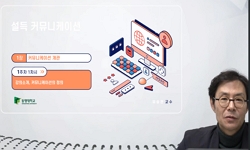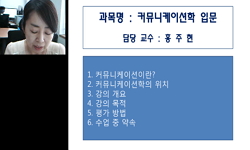A Study on the Effects of Partnership and Customer Relationship Strategies on the Performance of Information System in the IT Services Industry This study presents a research model that can be analyzed through theoretical discussion with various ex...
http://chineseinput.net/에서 pinyin(병음)방식으로 중국어를 변환할 수 있습니다.
변환된 중국어를 복사하여 사용하시면 됩니다.
- 中文 을 입력하시려면 zhongwen을 입력하시고 space를누르시면됩니다.
- 北京 을 입력하시려면 beijing을 입력하시고 space를 누르시면 됩니다.
https://www.riss.kr/link?id=T13400331
- 저자
-
발행사항
서울 : 韓國外國語大學校 大學院, 2014
-
학위논문사항
학위논문(박사) -- 韓國外國語大學校 大學院 , 국제경영학과 , 2014. 2
-
발행연도
2014
-
작성언어
한국어
- 주제어
-
DDC
658.18 판사항(22)
-
발행국(도시)
서울
-
기타서명
A Study on the Effects of Partnership and Customer Relationship Strategies on the Performance of Information System in the IT Services Industry
-
형태사항
208 p. : 삽도 ; 26 cm.
-
일반주기명
한국외국어대학교 논문은 저작권에 의해 보호받습니다.
지도교수: 전종근
참고문헌 : p.170-192 - 소장기관
-
0
상세조회 -
0
다운로드
부가정보
다국어 초록 (Multilingual Abstract)
A Study on the Effects of Partnership and Customer Relationship Strategies on the Performance of Information System in the IT Services Industry
This study presents a research model that can be analyzed through theoretical discussion with various existing literatures and preceding researches, and then conduct empirical analysis in order to identify the effects of partnership and customer relationship strategies on the performance of information system in the IT services industry. Based on the presented research model, there are three main research agenda and eight consequence hypotheses and in-depth research model were designed and verified.
Three main research agenda are as in the followings. First is the effect of complementarities and participation between IT service providers on the system quality and the effect of the system quality on satisfaction of the system. Second is the effect of communication (information-sharing) and trust between partner companies on system satisfaction. Third is whether the timing of partnership formation the system integrator has an effect on complementarities and participation. Also included in the third agenda is the effect of participation by market-leading system integrators on the system quality. Eight hypotheses and in-depth research model were designed and verified.
For an empirical verification of the suggested research model, this study targeted medium to large sized companies in Korea that went through system integration in the past three years and ran a survey on their employees who were directly involved in the project team or procurement process. A total of 5,230 e-mails were sent, of which 217 answers were submitted either by e-mail or post and 106 answers were received by visits or interviews. Among these 323 responses, 317 were found valid and used as a source of analysis.
Collected survey answers were analyzed with the statistical package SPSS 18.0 and common method bias was verified to minimize errors that often occur in an empirical study. In other words, this post verification intends to address the possibility of overestimating correlation between variables, distorting the reliance of the data, or common method bias issues. In addition, intensive feasibility analysis, CFA, and EFA analyses were conducted with AMOS 18.0 to verify the reliability and feasibility of the result. Finally, the hypothesis was verified with verification of the measurement model and structural equation model analysis.
First, analysis into the effect of partnership’s complementarities on the system quality identified that the more complementary partner’s assets are, the more positive impact they have on the system quality. On the effect of partner participation on the system quality, the more engaging consortium partners and customer are, the more positive impact there is on the system quality. Analysis of the effect of the system quality on system satisfaction level demonstrates higher system quality turns out to have more positive impact on the satisfaction level of the system.
Second, analysis into the effect of communication (information-sharing) and trust on system satisfaction in the case of system integrators revealed that the higher level of information-sharing exists between the system integrator and the customer, the more positive impact it has on trust. In additional, the higher trust is bonded between the system integrator and the customer, the more positive impact it has on system satisfaction.
Third was verification on the effects of an early consortium formation, complementarities, participation, and market-leading system integrator on the system quality. Study on the effect of an early formation of consortium on complementarities shows that the earlier a consortium between IT service providers is built, the more positive effect it has on the system quality. On the effect of an early consortium formation on participation, it also turned out that the earlier a consortium is built, the higher level of participation with customers becomes. On the effect of participation on the system quality, early formation of a consortium leads to higher level of participation, eventually inducing positive effects on the system quality. When forming a consortium with market-leading system integrators, the study demonstrated such consortium-building had positive effects on the system quality.
A further in-depth study of moderating effect analysis demonstrated, in the timing of consortium formation, market-leading system integrator respectively, complementarities and participation had effects on the system quality.
The analysis of the moderating effect of the timing of the partnership shows that the correlations between complementarities and the system quality was high in early consortium establishment whereas those between participation and the system quality was high in late consortium establishment, indicating that customers pay more attention to the process of system implementation in case of late consortium formation. As for the moderating effect of partner reputation, the analysis of market-leading system integrator demonstrated a statistically significant correlation between complementarities, the system quality, and system satisfaction whereas non-market leaders showed a statistically significant correlation between participation and the system quality and information-sharing and trust. This led to the conclusion that the latter relatively put more weights on the process.
Findings of this study have important implications both for academic researchers and companies’ management and employees. For researchers, the study has following theoretical implications. First, unlike previous studies which were conducted with focus on achievement from long-term strategic alliances, this study was focused on the impact of temporary and relatively short-term partnership and customer relationship strategy, for the first time as a study on IT service industry. Second, this study developed a research model on the impact of channel partnership and customer relationship strategy. Although the model is presented as an extension to the basic level, it is expected the model can serve as a research foundation on which achievements can be approached from various perspectives.
As for management and working-level employees of enterprises, this study provides following implications. First, joint projects based on complementariness among IT service providers are more likely to have significantly high potential for success. Given the business nature of IT service industry, sales activities and project execution based on partnership among IT service providers will mostly take similar forms in the same industry. Hence, co-managing best practices of joint projects with high level of complementarities and pursuing projects based on such partnership will lead to higher chances of winning project opportunities, bringing the project to a success, and having a high quality system in the customer site. Second, intimacy in customer relationship and active participation by customers can raise the system quality, ensure the project success, and reduce cost to manage the system. Third, partner designation and management can have business impact only when done in a complementary and long-term perspective. Fourth, active communication (information-sharing) with the customer can have impact on a trust-based business. Fifth, the research model can be of great use when enterprises and government organizations seek to execute system integration, especially when exploring ways to enhance the system quality and satisfaction. As this study is a research on large-sized companies that went through a major project in the past three years, the outcome of this study will have high utilization.
This study is meaningful in that it provides specific and effective strategies based on empirical research and analysis how IT service providers should formulate and execute their partnership and customer relationship strategy to improve business results.
It is expected the findings of this study be leveraged by many IT service providers both in and outside Korea as a useful decision-making information to set up sales and project execution strategy, significantly contributing to enhancing IT enterprises’ business performance.
목차 (Table of Contents)
- 제 1 장 서론 1
- 제 1 절 문제제기 1
- 제 2 절 연구목적 5
- 제 3 절 연구범위와 방법 7
- 제 1 장 서론 1
- 제 1 절 문제제기 1
- 제 2 절 연구목적 5
- 제 3 절 연구범위와 방법 7
- 제 2 장 기존 문헌 고찰 9
- 제 1 절 IT서비스산업 9
- 1. IT서비스산업의 의의 및 특징 9
- 2. IT서비스기업의 사업 특성 11
- 제 2 절 시스템통합 사업 15
- 1. 시스템통합 사업의 의의 15
- 2. 시스템통합의 역사적 고찰 17
- 3. 시스템통합 구축을 위한 구매 프로세스 20
- 4. 시스템통합 구축 기업의 고객 특성 24
- 제 3 절 채널 파트너 선정 25
- 1. 채널 파트너십의 의의 및 중요성 25
- 2. 채널 파트너십의 유형 29
- 3. 채널 파트너 선정기준 31
- 1) 상호 보완성 33
- 2) 파트너 명성 36
- 4. 채널 파트너십 구성 39
- 1) 파트너십 구성시점 41
- 제 4 절 고객관계의 영향 44
- 1. 고객관계에 관한 역사적 고찰 44
- 2. 고객관계의 친밀도 형성 전략 48
- 3. 고객관계 영향요인 51
- 1) 커뮤니케이션(정보공유) 53
- 2) 참여 및 참여유도 55
- 3) 신뢰 57
- 제 5 절 시스템 품질 63
- 1. 시스템 품질의 개념 63
- 2. 시스템 품질의 목적 64
- 3. 시스템 품질에 관한 선행연구 65
- 제 6 절 시스템 만족도 68
- 1. 시스템 만족도의 정의 68
- 2. 시스템 만족도에 관한 선행연구 69
- 제 3 장 연구모형 및 연구가설 설정 71
- 제 1 절 연구모형의 설정 72
- 1. 종합적 연구모형 73
- 제 2 절 연구가설 설정 74
- 1. 상호 보완성, 참여도, 시스템 품질과 시스템 만족도와의 영향관계 74
- 1) 상호 보완성이 시스템 품질에 미치는 영향 74
- 2) 참여도가 시스템 품질에 미치는 영향 77
- 3) 시스템 품질이 시스템 만족도에 미치는 영향 79
- 2. 커뮤니케이션(정보공유)과 신뢰도가 시스템 만족도에 미치는 영향 83
- 1) 커뮤니케이션(정보공유)이 신뢰에 미치는 영향 83
- 2) 신뢰도가 시스템 만족에 미치는 영향 86
- 3. 빠른 컨소시엄, 상호 보완성, 참여도, 시장선도 통합사업자가 시스템 품질에 미치는 영향 89
- 1) 빠른 컨소시엄 구성이 상호 보완성과 참여도에 미치는 영향 89
- 2) 시장선도 통합사업자가 시스템 품질에 미치는 영향 92
- 제 4 장 실증분석 97
- 제 1 절 조사 대상 기업의 선정 및 자료수집 방법 97
- 제 2 절 변수의 측정 99
- 1. 변수의 측정 99
- 1) 상호 보완성 99
- 2) 참여도 100
- 3) 시스템 품질 100
- 4) 커뮤니케이션(정보공유) 100
- 5) 신뢰도 101
- 6) 시스템 만족도 101
- 제 3 절 응답자의 특성과 조사대상 기업의 특성 102
- 1. 응답자의 특성과 조사대상 기업의 일반적인 특성 102
- 2. 조사대상 기업의 세부적인 특성 106
- 제 4 절 측정항목 108
- 1. 측정항목의 기술통계 108
- 2. 측정항목의 공통방법편의 검증 108
- 3. 측정항목의 탐색적 및 확인적 요인분석 112
- 1) 상호 보완성, 참여도, 시스템 품질, 시스템 만족도 측정항목의 탐색적 요인분석 112
- 2) 커뮤니케이션(정보공유)과 신뢰도 측정항목의 탐색적 요인분석 115
- 4. 측정항목의 신뢰성과 타당성 분석 117
- 5. 측정항목의 집중타당성 분석 121
- 제 5 절 연구가설 검증 123
- 1. 상호 보완성, 참여도, 시스템 품질과 시스템 만족도와의 영향관계 124
- 1) 상호 보완성이 시스템 품질에 미치는 영향 124
- 2) 참여도가 시스템 품질에 미치는 영향 126
- 3) 시스템 품질이 시스템 만족도에 미치는 영향 127
- 2. 커뮤니케이션(정보공유)과 신뢰도가 시스템 만족도에 미치는 영향 129
- 1) 커뮤니케이션(정보공유)이 신뢰도에 미치는 영향 129
- 2) 신뢰도가 시스템 만족도에 미치는 영향 131
- 3. 빠른 컨소시엄, 상호 보완성, 참여도, 시장선도 통합사업자가 시스템 품질에 미치는 영향 132
- 1) 빠른 컨소시엄 구성이 상호 보완성과 참여도에 미치는 영향 132
- 2) 시장선도 통합사업자가 시스템 품질에 미치는 영향 135
- 4. 추가연구: 컨소시엄 구성시점 및 시장선도 통합사업자에 따른 조절효과 분석 141
- 1) 컨소시엄 구성시점에 따라 상호 보완성, 참여도가 시스템 품질에 미치는 영향력의 차이 142
- 2) 시장선도 통합사업자에 따라 상호 보완성, 참여도가 시스템 품질에 미치는 영향력의 차이 146
- 제 6 절 실증분석 결과 및 해석 150
- 1. 상호 보완성, 참여도, 시스템 품질과 시스템 만족도와의 영향관계에 관련된 가설 검증 결과 151
- 2. 커뮤니케이션(정보공유)과 신뢰도가 시스템 만족도에 미치는 영향에 관련된 가설 검증 결과 151
- 3. 빠른 컨소시엄, 상호 보완성, 참여도, 시장선도 통합사업자가 시스템 품질에 미치는 영향에 관련 된 가설 검증 결과 152
- 4. 추가연구: 컨소시엄 구성시점 및 시장선도 통합사업자에 따른 조절효과 분석 결과 153
- 제 5 장 결론 155
- 제 1 절 연구의 요약 및 논의 155
- 제 2 절 연구결과의 시사점 160
- 1. 이론적 시사점 160
- 2. 실무적 시사점 163
- 제 3 절 연구의 한계 및 향후 연구방향 168
- 참고문헌 170
- 초록(영문) 193
- 설문지 199
1 Greenberg, "Social CRM", 2012
2 Pummer, "Psychometric Theory", Psychometric Theory, 2000
3 Buttle, "The CRM value chain", 2001
4 Gulati, "Alliances and Networks", Alliances and Networks, 1998
5 Harman, Harry Horace, "Modern factor analysis", University of Chicago Press, Modern Factor Analysis, 1976
6 Rosabeth Moss Kanter, "Collaborative Advantage", 1994
7 서의호, "e 전략정보시스템", 홍릉과학출판사, 2007
8 Levitt, "After the Sale is Over…", 1983
9 Bruhn, "Internal Service Barometers", 2003
10 채서일, "사회과학 조사방법론", 法文社, 1990
1 Greenberg, "Social CRM", 2012
2 Pummer, "Psychometric Theory", Psychometric Theory, 2000
3 Buttle, "The CRM value chain", 2001
4 Gulati, "Alliances and Networks", Alliances and Networks, 1998
5 Harman, Harry Horace, "Modern factor analysis", University of Chicago Press, Modern Factor Analysis, 1976
6 Rosabeth Moss Kanter, "Collaborative Advantage", 1994
7 서의호, "e 전략정보시스템", 홍릉과학출판사, 2007
8 Levitt, "After the Sale is Over…", 1983
9 Bruhn, "Internal Service Barometers", 2003
10 채서일, "사회과학 조사방법론", 法文社, 1990
11 Trepper, "Customer care goes end-to-end", 2000
12 Naude, "Assessing Relationship Quality", Assessing Relationship Quality, 2000
13 Ravi Kalakota, "E-Business : Roadmap for Success", 1999
14 Treacy, Wiersema, "The Customer Intimacy Imperative", 2010
15 Wyner, "Customer Relationship Measurement", 1999
16 Chess Media Group, "Guide to Understanding Social CRM", 2010
17 Elmuti, "An Overview of Strategic Alliances", 2001
18 S.Oh, Dwyer, F. Robert, Dwyer, F. R., Dwyer, "Developing Buyer-SellerRelationships", Developing Buyer-SellerRelationships, 1987
19 Chan, Martin, Keown, "Do strategic alliances create value?", 1997
20 Garrity, Sanders, "Information SystemsSuccess Measurement", 1998
21 Morgan, "Social Customer Strategy Hoe Achieved", Social Customer Strategy Hoe Achieved, 2010
22 Mayer, Schoorman, "An integrativemodelof organization trust", An IntegrativeModel of Organization Trust, 1995
23 Wilkinson, Brouthers, "Strategic Alliances: Choose Your Partners", 1995
24 Mark, Bamey, "Trustworthiness as a Source ofCompetitive", 1994
25 문대원, "정보시스템분석 감리지침 연구", 1997
26 Jarvelin, U.Lehtinen, "Relationship Quality in B2B ServiceContext", Relationship Quality in B2BService Context, 1996
27 Butcher, Atkinson, "Trust in ManagerialRelationships: a Review", 2003
28 Hkansson, "Developing relationships in businessnetworks", Developing Relationships inBusiness Networks, 1995
29 Gronroos, Revald, "The Value Concept and Relationship Marketing", 1996
30 Tan, Lim, "Trust in Coworkers and Trust inOrganizations", 2009
31 Das, Teng, "A Resource-Based Theory of StrategicAlliances", 2000
32 Meta Group, "The Customer Relationship ManagementEcosystem", 2000
33 Sharp, "Customer Relationship Management SystemHandbook", 2003
34 Dorf, Peppers, Rogers, "Is your company ready for one-to-one marketing?", Is Your Company Readyfor One-to-One Marketing, 1999
35 Berry, Parasuraman, "Marketing Service Competing and Through Quality", "Marketing Service, 1991
36 박성준, "2011년 산업위험 평가 ?SI(시스템통합)", 2010
37 Fitzgerald, "Contract and Partnership in the Outsourcing of IT", 1994
38 Mattson, "Systems Selling as a Strategy on IndustrialMarkets", 1973
39 신동엽, 조선영, "신뢰기반 조직경영: 그 가능성과 한계", 2008
40 Johnston, "CustomerRelationship Management Implementation Gaps", 2004
41 Payne,A., "Relationship Marketing, Strategy and Implementation", 1999
42 Oliver, "Satisfaction: A behavior perspective on theconsumer", Satisfaction: A Behavior Perspective on the Consumer, 1997
43 Hebert, Gremler, "Measuring Performance ofInternational Joint Ventures", Measuring Performance ofInternational Joint Ventures, 1991
44 Morgan,R.M, Hunt,S.D, "The commitment-trusttheory of relationship marketing", The Commitment-TrustTheory of Relationship Marketing, 1994
45 Sarker, Harrison, Echambadi, "AllianceEntrepreneurship and Firm Market Performance'", 2001
46 윤철호, 김상훈, "전자상점 성과에 관한 이론적 모형 구축", 한국경영과학회, "「경영과학」, 2003
47 전자신문, "2014년 IT산업 전망 -C레벨에게 물었습니다", 2013
48 Anand, "Do firms learn to createvalue? : the case of alliances", 2000
49 David, "International Strategic Alliance-Cooperating toCompete", 1995
50 Nilsson, "Strategic Alliances, Trick or Treat? The Caseof Scania", "Strategic Alliances, 1997
51 정해용, "공공부문 정보시스템의 통합적 평가모형", 광운대학교 대학원, "한국경영정보학회 춘계학술대회 논문집, 2003
52 백형엽, 강태구, "한국기업의 국제전략제휴 성과 결정요인", 한국무역학회, 2002
53 Bitner, "Building Service Relationships: It's all about Promises", Building Service Relationships: It's All AboutPromises, 1995
54 Sparks, O’Callaghan, Butchter, "Evaluative and relational influences on service loyalty", 2001
55 Deshpande, Moorman, "Factors affecting trust in market research relationship", Factors AffectingTrust in Market Research Relationship, 1993
56 Jones, Klepper, "Outsourcing Information TechnologySystems, and Services", "Outsourcing Information TechnologySystems, 1998
57 Gassman, "Selection Criteria for Social Media MonitoringPlatforms", 2012
58 Delone, "InformationSystemSuccess:TheQuestfortheDependentVariable", Information System Success: The Quest forthe Dependent Variable, 1992
59 Jackson, AnInternational Journal, "Rethinking Internal Communication:A Stakeholder Approach", 2007
60 Pitt, Watson, Kavan, "Servicequality:ameasureofinformationsystemseffectiveness", Service Quality: AMeasure of Information Systems Effectiveness, 1995
61 Gartner, "Customer Relationship Management : the GartnerPerspective", 2001
62 김남훈, "트위터, 페이스북 등 SNS가 금융에 주는 영향", "트위터, 2010
63 P.M.Doney, "Anexaminationofthenatureoftrustin buyerseller relationships", An Examination of the Natureof Trust in Buyer-Seller Relationships, 1997
64 Howard, Pritchard, "Analyzing theCommitment Loyalty Link in the Service Contexts", 1999
65 Missirilian, Calvi, "Key Supplier Manager(KSM): anEmerging Function in Purchasing", 2004
66 C.Camerer, S.B.Sitkin, Rousseau, "Not So Different Afte All: A Cross- Discipline View of Trust", 1998
67 Hannaford, "Systems Selling: Problems and Benefits forBuyers and Sellers", 1976
68 Kohli, "Managing Customer Relationship through EBusinessCollaboration", 2002
69 Brady, Hodbay, Davies, "Organizing for Solutions:Systems Seller vs Systems Integrator", 2007
70 Pan, "Information Systems Project Abandonment: AStakeholder Analysis", 2005
71 정해용, 김상훈, "정보시스템 평가지표 개발에 관한 실증적 연구", 한국경영과학회, "「한국경영과학지」, 2003
72 Saarinen, "An Expanded Instrument for Evaluating InformationSystem Success", 1996
73 Bose, "Customer Relationship Management: Key Components for IT Success", 2002
74 박상용, 전지훈, "KIS Industry outlook -System Integration산업동향 및 전망", 2013
75 Gartner, "Gartner Identifies the Top 10 Strategic TechnologyTrends for 2014", 2013
76 Aladwani, "IS Project Characteristics and Performance: AKuwaiti Illustration", 2000
77 Henderson, "Plugging into Strategic Partnerships : The Critical is Connection", Plugging into Strategic Partnerships:TheCritical IS Connection, 1990
78 Podsakoff, Organ, "Self-Reporters in Organizational Research: Problems and Prospects", Self-Reporters inOrganizational Research: Problems and Prospects, 1986
79 Yoshino, M. Y, "Strategic alliances : an entrepreneurial approach to globalization", Harvard Business School Press, Strategic Alliances: AnEntrepreneurial Approach to Globalization, 1995
80 W.B.Stephen, Gremler, "The Loyalty Ripple Effect:Appreciating the Full Value of Customers", The Loyalty Ripple Effect:Appreciating the Full Value of Customers, 1999
81 Gr?nroos, "The Marketing strategy continuum: A marketingconcept for the 1990s", The Marketing Strategy Continuum: A Marketing Conceptfor the 1990s, 1991
82 Wray, Palmer, Bejou, "Using Neural NetworkAnalysis to Evaluate Buyer-seller Relationship", 1994
83 Baldwin, "A Primer in the Use and Interpretation of StructuralEquation Models", A Primer in the Use and Interpretation ofStructural Equation Models, 1989
84 Shanker Ganesan, "Determinants of Long-Term Orientation in Buyer-Seller Relationships", 1994
85 Newell, "Customer Relationship Management in the NewEra of Internet Marketing", 2000
86 Gasco, Gonzalez, Llopis, "Information SystemsOutsourcing Reasons and Risks: An Empirical Study", 2009
87 Sumic, Geschickter, "Social Media Provides Utilities aNew Channel for Customer Engagement", 2012
88 James A.Narus, James C.Anderson, "A model of distributor firmand manufacturer firm working partnerships", 1990
89 Boles, Barksdele, Jonhson, "HowSalespeople Build Quality Relationship: A Replication andExtension", 2000
90 Chowa, Sabherwal, Jeyaraj, "Information SystemSuccess: Individual and Organizational Determinants", 2006
91 Prince, "Commercial Friendship: ServiceProvider-Client Relation-Ship in Context", 1999
92 Czepiel, "Service Encounters and Service Relationships:Implications for Research", Service Encounters and Service Relationships :Implications for Research, 1990
93 Philip Hans Franses, Wuyts, "Vertical Marketing Systems for Complex Products: A Triadic Perspective", 2004
94 Linda L.Price, Arnould, "River Magic: ExtraordinaryExperience and the Extended Service Encounter", 1993
95 Saraf, Langdon, Gosain, "IS ApplicationCapabilities and Relational Value in Interfirm Partnerships", 2007
96 Gulati, "Social Structure and Alliance Formation Patterns: a Longitudinal Analysis", Social Structure and Alliance Formation Patterns: ALongitudinal Analysis, 1995
97 Bundapudi, "Customers' Motivations forMaintaining Relationships with Service Providers", 1997
98 Bejou, Ingram, "Determinants of Relationship Quality:An Artificial Neural Network Analysis", Determinants ofRelationship Quality: An Artificial Neural Network Analysis, 1996
99 Berry, Parasuraman, "Relationship Marketing of Services-Growing Interest, Emerging Perspectives", "Relationship Marketing of Services - GrowingInterest, 1995
100 Mclean, Delone, "The DeLone andMcLean Model of Information System Success: ATen-Year Update", The DeLone and McLean Modelof Information System Success: A Ten-year Update, 2003
101 M.Kiew, Seddon, "A Partial Test and Development of the DeLone and McLean Model of IS Success", 1994
102 Lyles, Lane, "Absorptive capacity,learning and performance in international joint venture", "Absorptive capacity, 2001
103 Pearson, Bariley, "Development of a tool for measuring andanalyzing computer user satisfaction", Development of a Tool forMeasuring and Analyzing Computer User Satisfaction, 1983
104 Luo, "Partner Selection and Venturing Success: TheCase of Joint Ventures in China", 1997
105 Hess, Ganesan, "Dimensions and Levels of Trust: Implications forCommitment to a Relationship", 1997
106 Chan, Gable, Sedera, "Re-ConceptualizingInformation System Success: The IS-Impact MeasurementModel", 2008
107 BarNir A, Smith K.A, "“Interfirm Alliances in the Small Business: The Role of Social Networks”", Interfirm Alliances in the SmallBusiness: The Role of Social Networks, 2002
108 Pitt, Watson, Kavan, "Measuring information systems service quality: Concerns for a complete canvas", 1997
109 지식경제부, "산업통산자원백서: 2조불 경제를 앞당기는 지식경제제 1권", 2013
110 Crosby.R.A, K.R.Evans, "Relationship Quality inservice Selling: An Interpersonal Influence Perspective", RelationshipQuality in Service Selling: An Interpersonal InfluencePerspective, 1990
111 Tan, "Towards the Differentiation ofthe Trust in Supervisor and Trust in Organization", 2000
112 C.Gronroos, T.Strnadyik, Storbacka, "Managing Customer Relationships for Profit: the Dynamics of Relationship Quality", ManagingCustomer Relationships for Profit: The Dynamics of RelationshipQuality, 1994
113 Lee, Kettinger, Lee.S, "Pragmatic Perspectives on the Measurement of Information Systems Service Quality", 1997
114 이재남, "정보시스템 외주위탁에서 파트너쉽의 품질 사회적 이론관점", 정보시스템 외주위탁에서 파트너쉽의 품질: 사회적 이론관점, 1999
115 강동석, "전자정부서비스에 대한 사용자 만족도 결정요인에 관한 연구", 2009
116 Gr?nroos, "From Marketing Mix to Relationship Marketing:Towards a Paradigm Shift in Marketing", From Marketing Mix to Relationship Marketing:Towards a Paradigm Shift in Marketing, 1994
117 Dawn, Wulf, Gaby, "Investments and involvements as mechanisms producingcommitment to the organization", 2001
118 Larue Tone Hosmer, "Trust : The Connecting Link Between Organizational Theory And Philosophical Ethics", Trust: The Connecting Link betweenOrganizational Theory and Philosophical Ethics, 1995
119 Geringer, "Strategic Determinants of Partner SelectionCriteria in International Joint Ventures", Strategic Determinants of Partner SelectionCriteria in International Joint Ventures, 1991
120 Chen, "Understanding Customer RelationshipManagement(CRM) : People, Process and Technology", "Understanding CustomerRelationship Management(CRM): People, 2003
121 Lee, Chung, "Complementarily, StatusSimilarity and Social Capital as Drivers of Alliance Formation", "Complementarily, 2000
122 정종기(Jong-ki Jung), 전종근(Jong-kun Jun), "IT 서비스 기업의 파트너십 활용 전략이 판매성과에 미치는 영향", 국제e-비즈니스학회, 2012
123 Chan, Newson, Volkoff, "Leading theDevelopment and Implementation of Collaborative InterOrganizational System", 1999
124 Lee, Kettinger, "Perceived service quality and user satisfactionwith the information services function", 1994
125 Rogers, Peppers, "Rules to Break & Laws to Follow: HowYour Business Can Beat the Crisis of Short-Termism", 2008
126 Wayne D.Hoyer, Ruinartz, "The CustomerRelationship Management Process: Its Measurement and Impact on Performance", The CustomerRelationship Management Process: Its Measurement and Impacton Performance, 2004
127 Fomell C. and Larcker D.F, "Evaluating structural equation models with unobservable variables and measurement error", Evaluating Structural EquationModels with Unobservable Variables and Measurement Error, 1981
128 Mayer, "Theeffectoftheperformanceappraisalsystem on trustformanagement:A field quasi-experiment", The Effect of the PerformanceAppraisal System on Trust for Management: A Field Quasiexperiment, 1999
129 Mclean, Delone, Petter, "Measuring InformationSystems Success: Models, Dimensions, Measures, andInterrelationships", "MeasuringInformation Systems Success: Models, 2008
130 Reynolds, "Customer benefits and companyconsequences of customer-salesperson relationship in retailing", 1999
131 Lin X, Germain, "Sustaining Satisfactory Joint VentureRelationship: The Role of Conflict Resolution Strategy", 1998
132 Grover, Cheon, Teng, "TheEffectofServiceQualityand Partnership on the Outsourcing of Information systemsFunctions", 1996
133 Vance, Straub, "Examiningtrust in information technology artifacts: The effects of systemquality and culture", 2008
134 Sakano, Takenouchi, Johnston, Cullen, "Setting the stage for trust and strategic integration in Japanese-U,S. cooperative alliances,", Setting the stage for trust and strategic integration inJapanese-U.S. cooperative alliances, 1997
135 Zemanek, "Manufacturer Influence versus ManufacturerSalesperson Influence Over the Industrial Distributor", 1997
136 Li, "Perceived importance of information systems success factor: A meta analysis of group differences", Perceived Importance of Information SystemsSuccess Factor: A Meta Analysis of Group Differences, 1997
137 Nicolaou, Bhattacharya, "Organizational performance effects of ERP systems usage: The impact of post-implementation changes", OrganizationalPerformance Effects of ERP Systems Usage: the Impact ofPost-Implementation Changes, 2006
138 Bensaou, Venkatraman, "Configurations ofInterorganizational Relationship: A comparison Between U.S.and Japanese Automakers", 1995
139 Zheer, "Does Trust Matter?Exploring the Effects of Interorganizational and InterpersonalTrust on Performance", Does Trust Matter?Exploring the Effects of Interorganizational and InterpersonalTrust on Performance, 1998
140 Levina, Ross, "From the Vendor’s Prospective:Exploring the Value Proposition in Information TechnologyOutsourcing", 2003
141 Kim, Calantone, Cavusgil, "Information SystemInnovations and Supply Chain Management: Channel Relationshipsand Firm Performance", 2006
142 Rindfleisch, "Organizational trust and interfirm cooperation: An examination ofhorizontal versus vertical alliances", Organizational Trust and Inter FirmCooperation: An Examination of Horizontal Versus VerticalAlliances, 2000
143 Rich, "The Sales Manager as a Role Model: Effects on Trust, JobSatisfaction, and Performance of Sales People", "The Sales Manager as a Role Model: Effects onTrust, 1997
144 Podsakoff, "Commonmethod biases in behavioral research: A critical review of the literature andrecommended remedies", Common Method Biases in Behavioral Research:A Critical Review of the Literature and RecommendedRemedies, 2003
145 Hibbard, Iacobucci, "Toward an EncompassingTheory of Business Marketing Relationship and InterpersonalCommercial Relationship", 1999
146 Eisenhardt, Schoonhoven, "Resource-based view of strategic alliance formation: Strategic and social effects in entrepreneurial firms", Resource-BasedView of Strategic Alliance Formation: Strategic and Social Effectsin Entrepreneurial Firms, 1996
147 Salmi, erson, "Can You Buy a BusinessRelationship? On the Importance of Customer and SupplierRelationships in Acquisitions", 2001
148 Klepper, "Outsourcing Relationships, in Khosrowpour,Mehdi. Managing Information Technology Investment withOutsourcing", "Outsourcing Relationships, 1995
149 Groroos, "Relationship Approach to Marketing in Service Contexts: The Marketing and Organizational Behavior Interface", Relationship Approach to Marketing in Service Contexts: The Marketing and Organizational Behavior Interface, 1990
150 Singhal, Hendricks, Stratman, "TheImpact of Enterprise Systems on Corporate Performance: AStudy of ERP, SCM, and CRM System Implementations", "TheImpact of Enterprise Systems on Corporate Performance: AStudy of ERP, 2007
151 Sohi, Mohr, "Communication flows in distribution channels: Impact on assessments of communication quality and satisfaction", 1995
152 Wixom B.H, Nelson R.R, "Antecedents of information and system quality: An empirical examination within the context of data warehousing", Antecedents ofInformation and System Quality: An Empirical ExaminationWithin the Context of Data Warehousing, 2005
153 Knox, Ryals, "Cross-functional Issues in the Implementation ofRelationship Marketing through Customer Relationship Management", 2001
154 Johnson, "Strategic Integration in Industrial Distribution Channels: Managing the Interfirm Relationship as a Strategic Asset", 1999
155 Chen, Budhwar, Aryee, "Trust as a Mediatorof the Relationship between Organizational Justice an WorkOutcome: Test of a Social Exchange Model", 2002
156 Mohr, "Characteristic of partnership success:Partnership attributes, communication behavior and conflictresolution techniques", "Characteristic of PartnershipSuccess: Partnership Attributes, 1994
157 Cummings, Holmberg, "Building SuccessfulStrategic Alliances: Strategic Process and Analytical Tool forSelecting Partner Industries and Firms", 2009
158 Cavusgil, Seggie, "Do Supply Chain ITAlignment and Supply Chain Interfirm System Integration ImpactUpon Brand Equity and Firm Performance?", 2006
159 Bassellier, "Business Competence of Information Technology Professionals : Conceptual Development and Influenceon IT-Business Partnerships", 2004
160 Young-Ybarra, Wiersema, "Strategic Flexibility inInformation Technology Alliances: The Influence of TransactionCost Economics and Social Exchange Theory", 1999
161 Pardo, "Key Account Management in the Industrial Field.The Account Team for an Efficient Reconfiguration of theSupplier-Customer Relationship", 2001
162 Barnes, "The Issue of Establishing Relationships withCustomers in Service Companies: When Are RelationshipsFeasible and What Form Should They Take?", 1994
163 Liu, Leach, "Developing Loyal Customers with aValue-adding Sales Force: Examining Customer Satisfaction and the PerceivedCredibility of Consultative Salespeople", 2001
164 Prybutok, Myers, "AComprehensive Model for Assessing the Quality and Productivity ofthe Information System Function: Toward a Theory for InformationSystems Assessment", 1997
165 Kumar, "Partner Selection Criteria and Success ofTechnology Transfer: A Model Based on Learning Theory Appliedto the Case of Indo-German Technical Collaboration", 1995
166 김성수, 이용진, 류성민, "중국진출 한국기업에서 몰입형인사시스템이 인사관리 효과성에 미치는 영향: 경쟁전략과본사파견인력의 조절효과", 2009
167 Sheth, Parvatuyar, "Conceptual Framework ofCustomer Relationship Management, in Customer RelationshipManagement-Emerging Concepts, Tools and Applications,Sheth, J. N. Parvatiyar, A. and Shainesh, G. eds", "Conceptual Framework ofCustomer Relationship Management, 2001














